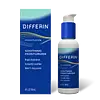What's inside
What's inside
 Key Ingredients
Key Ingredients

 Benefits
Benefits

 Concerns
Concerns

 Ingredients Side-by-side
Ingredients Side-by-side

Water
Skin ConditioningGlycerin
HumectantHydrogenated Polyisobutene
EmollientCeteareth-20
CleansingCetearyl Alcohol
EmollientPersea Gratissima Oil
Skin ConditioningTocopheryl Acetate
AntioxidantDimethicone
EmollientPanthenol
Skin ConditioningCitric Acid
BufferingSodium Levulinate
Skin ConditioningCaprylyl Glycol
EmollientBenzyl Alcohol
PerfumingStearoxytrimethylsilane
EmollientStearyl Alcohol
EmollientAcrylates/C10-30 Alkyl Acrylate Crosspolymer
Emulsion StabilisingSodium Anisate
AntimicrobialWater, Glycerin, Hydrogenated Polyisobutene, Ceteareth-20, Cetearyl Alcohol, Persea Gratissima Oil, Tocopheryl Acetate, Dimethicone, Panthenol, Citric Acid, Sodium Levulinate, Caprylyl Glycol, Benzyl Alcohol, Stearoxytrimethylsilane, Stearyl Alcohol, Acrylates/C10-30 Alkyl Acrylate Crosspolymer, Sodium Anisate
Water
Skin ConditioningCaprylic/Capric Triglyceride
MaskingPropanediol
SolventAloe Barbadensis Leaf Juice
Skin ConditioningGlycerin
HumectantCocos Nucifera Water
MaskingCetearyl Alcohol
EmollientCetearyl Glucoside
EmulsifyingHexanoyl Dipeptide-3 Norleucine Acetate
Skin ConditioningSodium Hyaluronate
HumectantSqualane
EmollientRose Extract
Skin ConditioningCamellia Oleifera Seed Oil
Skin ConditioningCamellia Sinensis Leaf Extract
AntimicrobialLavandula Angustifolia Flower/Leaf/Stem Extract
MaskingBisabolol
MaskingCymbopogon Martini Herb Extract
PerfumingButyrospermum Parkii Butter
Skin ConditioningVitis Vinifera Seed Oil
EmollientVanilla Planifolia Fruit Extract
Skin ConditioningTocopheryl Acetate
AntioxidantHydroxyethylcellulose
Emulsion StabilisingHydroxyethyl Acrylate/Sodium Acryloyldimethyl Taurate Copolymer
Emulsion StabilisingLecithin
EmollientPolysorbate 60
EmulsifyingSorbitan Isostearate
EmulsifyingPhenoxyethanol
PreservativeChlorphenesin
AntimicrobialCitronellol
PerfumingGeraniol
PerfumingWater, Caprylic/Capric Triglyceride, Propanediol, Aloe Barbadensis Leaf Juice, Glycerin, Cocos Nucifera Water, Cetearyl Alcohol, Cetearyl Glucoside, Hexanoyl Dipeptide-3 Norleucine Acetate, Sodium Hyaluronate, Squalane, Rose Extract, Camellia Oleifera Seed Oil, Camellia Sinensis Leaf Extract, Lavandula Angustifolia Flower/Leaf/Stem Extract, Bisabolol, Cymbopogon Martini Herb Extract, Butyrospermum Parkii Butter, Vitis Vinifera Seed Oil, Vanilla Planifolia Fruit Extract, Tocopheryl Acetate, Hydroxyethylcellulose, Hydroxyethyl Acrylate/Sodium Acryloyldimethyl Taurate Copolymer, Lecithin, Polysorbate 60, Sorbitan Isostearate, Phenoxyethanol, Chlorphenesin, Citronellol, Geraniol
Ingredients Explained
These ingredients are found in both products.
Ingredients higher up in an ingredient list are typically present in a larger amount.
Cetearyl alcohol is a mixture of two fatty alcohols: cetyl alcohol and stearyl alcohol. It is mainly used as an emulsifier. Emulsifiers help prevent the separation of oils and products. Due to its composition, it can also be used to thicken a product or help create foam.
Cetearyl alcohol is an emollient. Emollients help soothe and hydrate the skin by trapping moisture.
Studies show Cetearyl alcohol is non-toxic and non-irritating. The FDA allows products labeled "alcohol-free" to have fatty alcohols.
This ingredient is usually derived from plant oils such as palm, vegetable, or coconut oils. There is debate on whether this ingredient will cause acne.
Due to the fatty acid base, this ingredient may not be Malassezia folliculitis safe.
Learn more about Cetearyl AlcoholGlycerin is already naturally found in your skin. It helps moisturize and protect your skin.
A study from 2016 found glycerin to be more effective as a humectant than AHAs and hyaluronic acid.
As a humectant, it helps the skin stay hydrated by pulling moisture to your skin. The low molecular weight of glycerin allows it to pull moisture into the deeper layers of your skin.
Hydrated skin improves your skin barrier; Your skin barrier helps protect against irritants and bacteria.
Glycerin has also been found to have antimicrobial and antiviral properties. Due to these properties, glycerin is often used in wound and burn treatments.
In cosmetics, glycerin is usually derived from plants such as soybean or palm. However, it can also be sourced from animals, such as tallow or animal fat.
This ingredient is organic, colorless, odorless, and non-toxic.
Glycerin is the name for this ingredient in American English. British English uses Glycerol/Glycerine.
Learn more about GlycerinTocopheryl Acetate is AKA Vitamin E. It is an antioxidant and protects your skin from free radicals. Free radicals damage the skin by breaking down collagen.
One study found using Tocopheryl Acetate with Vitamin C decreased the number of sunburned cells.
Tocopheryl Acetate is commonly found in both skincare and dietary supplements.
Learn more about Tocopheryl AcetateWater. It's the most common cosmetic ingredient of all. You'll usually see it at the top of ingredient lists, meaning that it makes up the largest part of the product.
So why is it so popular? Water most often acts as a solvent - this means that it helps dissolve other ingredients into the formulation.
You'll also recognize water as that liquid we all need to stay alive. If you see this, drink a glass of water. Stay hydrated!
Learn more about Water